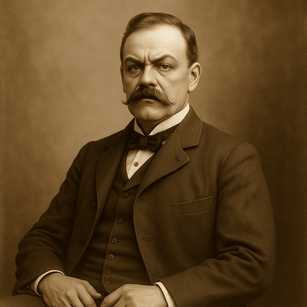Keeping the Stove Hot: Winter of 1884–85
The snow fell on a game in flux. The National Alliance had expired almost as quickly as it began, leaving behind only ashes — and two smoldering embers in Boston and St. Louis. With the Pioneers destined for survival, and whispers of Boston’s Brahmins seeking shelter elsewhere, attention turned to the two established leagues, both of which took decisive steps to prune their ranks and steady their course.
“Eight Shall Carry On” – The International Association Contracts
 From the New York Herald, December 1884
From the New York Herald, December 1884
The International Association has survived its most ambitious year, but at a cost. Twelve clubs proved too many for the circuit to sustain, the talent spread thin and the patrons reluctant to fill the benches in lesser cities. At the annual winter meeting, the magnates acted decisively: four clubs will be struck from the rolls, leaving a more compact and competitive league of eight.
Foremost among the changes is the retention of Boston. The city’s Minutemen proved a dreadful failure, but fortune smiled when the champions of the late National Alliance, the Boston Brahmins, found themselves without a home. Their owner, Mr. Percival Whittemore (shown left), secured Boston’s slot in the International, merging the Brahmins’ roster and name into the Association. Thus, New England retains its pride, and the league gains not a liability but a pennant-winner.
Elsewhere, the Washington Legislators and Quebec Beavers are no more, their support too meager to warrant continuance. The Toledo Toms likewise vanish, squeezed out by larger neighbors.
Those remaining: St. Louis, Baltimore, Montreal, New York, Pittsburgh, Cincinnati, Toronto, and Boston, form the new backbone of the Association. Together, they vow to present a sterner competition in 1885, stripped of weaklings and wastrels.
Yet questions remain. With the Federal League absorbing St. Louis from the fallen National Alliance, and whispers that more realignments may come, the base ball world faces another season of intrigue. For now, the International claims eight strong clubs. Whether they remain so when the snow melts, only time will tell.
“The Strongest Eight” – Federal League Announces Contraction
From the Chicago Tribune, December 1884
The Federal League, the senior circuit of professional base ball, enters 1885 with a renewed sense of order and strength. At their winter conclave in Boston, the magnates resolved to trim their ranks to eight clubs, ensuring quality over quantity in the campaign to come.
The Milwaukee Creams, perennial stragglers, are no more. Despite earnest efforts, the Cream City failed to produce either the cranks or the coin to sustain top-flight base ball. Their departure was met with shrugs in most quarters, and sighs of relief in others.
In their stead, the league looks westward with excitement. The St. Louis Pioneers, champions-in-waiting of the late National Alliance, arrive with full purses and great ambition. Under the stewardship of financier Charles DeWitt Barclay, the Pioneers promise to add luster (and no small controversy) to the Federal banner. Barclay’s determination to seat his club among the game’s aristocracy has already unsettled more cautious men, but none can deny that his Pioneers bring both pedigree and promise.
Thus the Federal League marches into its tenth season with these eight clubs: Cleveland, New York, Philadelphia, Chicago, Rochester, Louisville, Detroit, and now St. Louis. A sturdy roster, drawn from the strongest cities and clubs, with no weak sisters to weigh down the schedule.
With Cleveland fresh off a glorious pennant, New York and Philadelphia resurgent, and St. Louis looming on the horizon, the stage is set for perhaps the most competitive season yet. The Federal League proclaims itself the standard-bearer of professional base ball — and dares any rival to say otherwise.